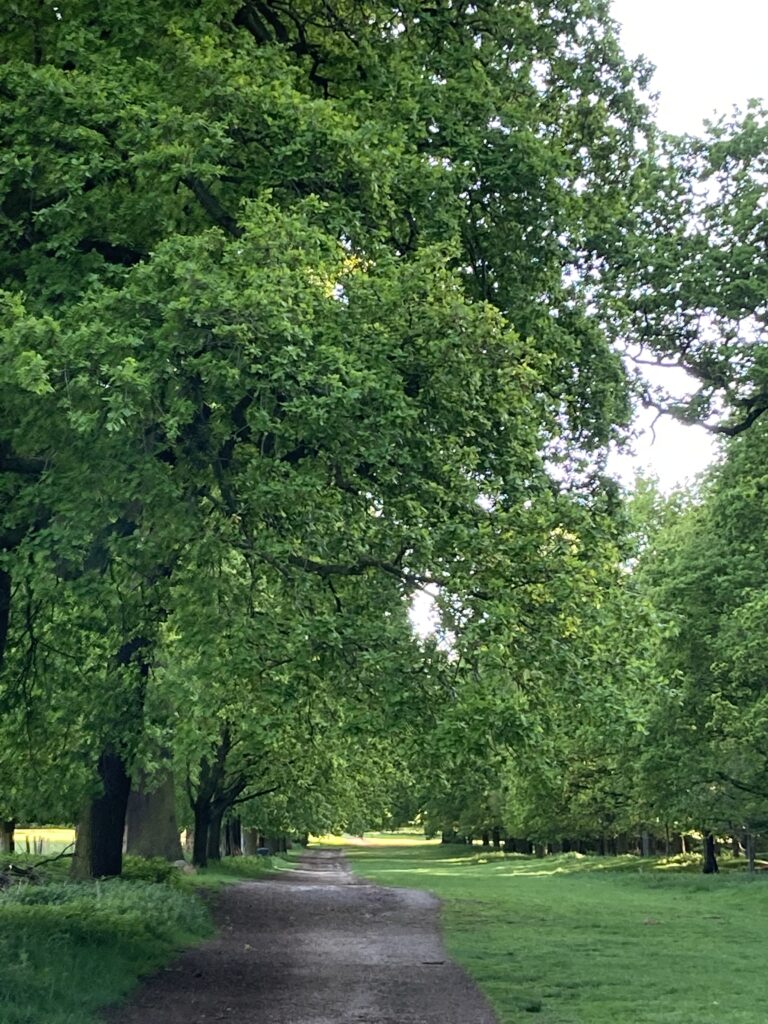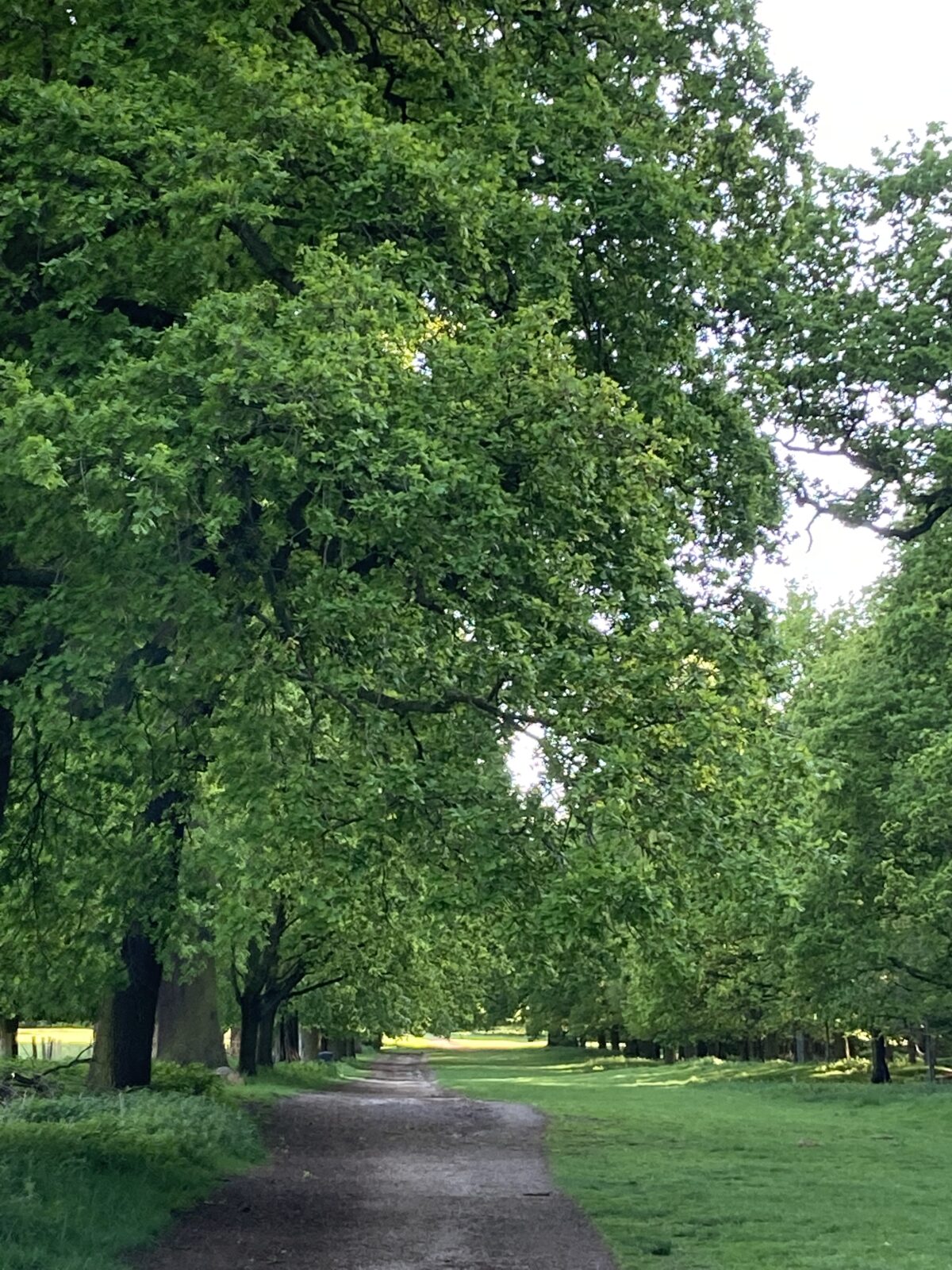Wollaton Park boasts many impressive tree avenues that contribute significantly to its landscape and historical character.
These avenues are not just aesthetically pleasing; they are integral to the park’s historical design, providing formal approaches, framing views of Wollaton Hall, and offering valuable habitats for wildlife. They represent a conscious effort over centuries to shape the landscape and create a grand setting for the Elizabethan mansion at its heart.

Main Drive
From the Hall to Wollaton Village.
Originally planted by Francis Willoughby, as acorns, between 1664 and 1666, described as “Two avenues of ‘noble oaks’ leading to Wollaton village”. The original trees have been replaced, and the avenue now contains a mixture of tree species.
Sweet Chestnut Avenue
Planted between 1697 and 1720 as two double rows of Sweet Chestnuts. Now two single rows. Most of the trees are replacements; one or two may be original.
A favourite of the Deer in Autumn.


Lime Tree Avenue.
Leading from the Hall, dissecting the golf course, to Middleton Boulevard. Originally planted circa 1700, with various replacements over the centuries.
Digby Avenue.
Four lines of (mainly) Oak trees, leading from the Hall to Harrow Road. Planted around 1838 by Digby Willoughby.


Smithsons Avenue
The mostly Oak treeline from the 508 cafe to the golf course is a bit of a curiosity, not aligning with the estate’s original radial avenue design. It was probably planted when the Walled Garden was built in the 1780s. Maps from 1870 show trees from the Walled Garden extending halfway up the hill, with the remainder being more recent additions (after 1953). It’s named Smithsons Avenue on Council Maps, possibly after Smythson, the architect of the Hall.
At the top of the hill is a mini-Arboretum with several one-off specimen trees, planted in the 1980s.
South Avenue.
There were two distinct plantings of Common Lime Trees down to the lake. The first was around 1700, and then again about 100 years later. There are also some more recent replacements.


Parkside Oak Avenue
Oak Avenue from the Parkside entrance to the Lake offers a picturesque approach to the lake. Planted in the 1970s.
Jubilee Avenue.
Path from the Stableblock to the Hall. Planted in 1980 for the Queen Mother’s birthday.


Derby Road Oak Avenue
From the Lake to the Derby Road entrance / Beeston Lodge.
Planted with Oak Trees in the 1980s.
Avenue History
The engraving by Kip and Knyff (1720) indicates the history of the avenues.

- At 1 o’clock in the picture from the hall, we can see the two double rows of Sweet Chestnut trees.
- At 3 o’clock, the avenue of trees leads towards Wollaton Village. This seems to show 8 rows of trees, whereas documentary evidence suggests 4 were planted.
- At 7 o’clock, Lime Tree Avenue.
- At 10 o’clock, Lime trees lead from the Formal Garden to the Lake.
- At 11 o’clock, the avenue that once existed here is no longer present, but it is where Jubilee Avenue has been planted.

